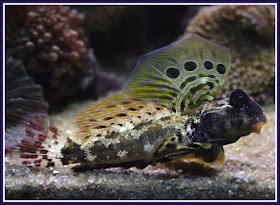Ah, spring is in the air! Flowers are blooming, the air is warm, and songbirds fill the air with music. What could possibly be more representative of spring than a brightly-colored songbird?
...a brightly-colored, poisonous songbird?!
This colorful little bird is a hooded pitohui (Pitohui dichorus). It is native to all places called "New Guinea," and quite common there. Both females and males have bright colors, so it's not like we can tell if that's a dude or a chick. Yes, that pun was intended; it's Easter.
And, yes, the songbird is poisonous. The hooded pitohui was one of the first documented poisonous birds, and is frequently touted as the most poisonous.
How does a songbird become poisonous? By eating lots and lots of poisonous beetles. The process is called bioaccumulation, and is roughly the same method by which DDT accumulated in various bird species during the 60's - only, well, more beneficial. It's virtually the same way that lorises and monarch butterflies become toxic.
The resulting poison works like a charm. It is a neurotoxin called homobatrachotoxin, and can be found in most places in or on the bird's body. Merely touching this bird causes tingling and numbness (nerve tampering). Imagine what eating this bird could do. No wonder they're labelled as "least concern."
Need more of a trip? These beetles are related to the same bugs that poison dart frogs (i.e. the little froggies so lethal that natives dip arrows in their poison) eat. The pitohui is a bird who thinks it's a poison dart frog. You thought you knew songbirds? Don't trust those bright colors. They might not be for mating.
...a brightly-colored, poisonous songbird?!
This colorful little bird is a hooded pitohui (Pitohui dichorus). It is native to all places called "New Guinea," and quite common there. Both females and males have bright colors, so it's not like we can tell if that's a dude or a chick. Yes, that pun was intended; it's Easter.
And, yes, the songbird is poisonous. The hooded pitohui was one of the first documented poisonous birds, and is frequently touted as the most poisonous.
How does a songbird become poisonous? By eating lots and lots of poisonous beetles. The process is called bioaccumulation, and is roughly the same method by which DDT accumulated in various bird species during the 60's - only, well, more beneficial. It's virtually the same way that lorises and monarch butterflies become toxic.
 |
| This bird is going to KILL you. |
The resulting poison works like a charm. It is a neurotoxin called homobatrachotoxin, and can be found in most places in or on the bird's body. Merely touching this bird causes tingling and numbness (nerve tampering). Imagine what eating this bird could do. No wonder they're labelled as "least concern."
Need more of a trip? These beetles are related to the same bugs that poison dart frogs (i.e. the little froggies so lethal that natives dip arrows in their poison) eat. The pitohui is a bird who thinks it's a poison dart frog. You thought you knew songbirds? Don't trust those bright colors. They might not be for mating.


















































